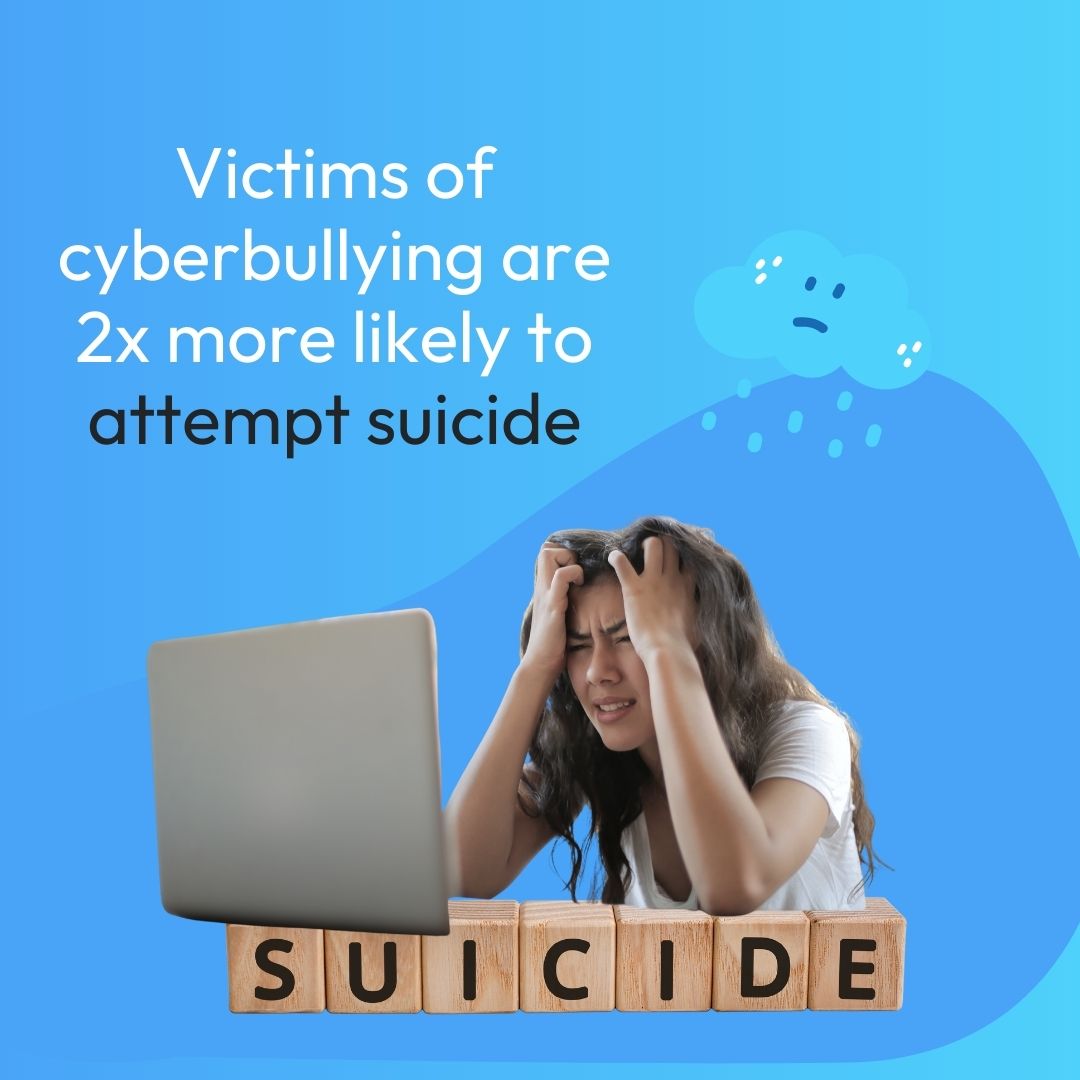The stats are alarming, but they have been shared time and time again. Children who are victims of cyberbullying are twice as likely to attempt suicide. According to the CDC, suicide ideation and attempts among adolescents have nearly doubled since 2008.
This has made suicide the 2nd leading cause of death for individuals between the ages of 10 to 34.
What does Cyberbullying look like?
Cyberbullying is when individuals use electronic communications to bully another individual. This is done by sending intimidating, threatening or unpleasant messages through gaming chats and social media.

Cyberbullying and Suicide
It is important to note that cyberbullying is not the only cause of suicide. Cyberbullying, and bullying of any kind, play a role in an individual attempting to take their own life. It is also important to note that while those who experience cyberbullying are twice as likely to attempt suicide, the perpetrators are also at a higher risk of experiencing suicidal thoughts and behaviors. The act of bullying can lead an individual to feel depressed, lonely, hopeless and experience feelings of decreased self-worth, all of which can be pre-cursors to suicide.
The term cyberbullicide is used to describe the phenomenon of suicide indirectly or directly influenced by experiences with online aggression.
This may be from flaming, harassment, sexual content, privacy violations, blackmail, online predators and more.
Cases of Bullying & Suicide
Channing Smith – 16
Channing Smith was a 16 year old boy from Manchester, Tennessee. He took his own life after he was outed by cyberbullies. Two classmates publicized screenshots of explicit text conversations that he had with another young man. When he found out that the conversations had been publicized, he took his own life as he was unable to face the humiliation that awaited him at school. #JusticeForChanning
Carson Bride – 16
After being anonymously cyberbullied on Snapchat and YOLO. In the last days of his life, he was desperately trying to find out who was cyberbullying her. He was reaching out to friends trying to learn who would do something like that to him. He was searching for YOLO hacks to try and identify his tormentors, but when he had no luck, he took his own life.
Amanda Todd – 15
After numerous suicide attempts, Amanda Todd committed suicide at the age of 15. She has been groomed by a sexual predator and blackmailed into showing her breasts on webcam to the predator. She was bullied, cyberbullied, assaulted, and blackmailed. She moved from school to school and city to start fresh and escape the abuse and bullying, but every time she moved, the perpetrator found her and cyberbullied her through her new peers. He shared her nude pictures, harassed and humiliated her for years until she took her own life. Over the years, she engaged in self mutilation, cutting, self-harm, drug and alcohol abuse, and many suicide attempts. She experienced many hospital stays and was a medicated for depression. No matter where she went, the blackmailer followed closely behind cyberbullying and harassing her until she successfully took her own life.
Marian Hernández Rojas – 10
“She was really good at hiding it” – This is what was said after the Rojas family found out that their daughter Marian had been cyberbullied and had been engaging in self-harm since the 4th grade. After her death, they found a phone that no one in her family knew she had. While there wasn’t a lot of information on it, they were able to see that she blocked a contact, someone who had been cyberbullying her according to her friends. The extent of the messages were not discovered, but they were said to be “creepy”. The life she was living was the not the one her family saw. She held it inside of her until the day she died.
How to Protect Your Children
As your raise your children in the age of the internet, it is important to work hard to raise good digital citizens. Ensure that you have open lines of communication with your child so that they feel comfortable sharing what is going on and coming to you for help should they need it. Monitor changes in your child’s behavior. Don’t chalk it up to their age or attitude, make sure that you monitor any changes and figure out where they are coming from. Let your child know that you are there for them and get involved in their online life. Let your child know that you have time for them so they don’t worry about adding more stress to your life if they have a problem. Ensure that they know that you always have time for them. Should something happen, deal with the issue at hand, don’t resort to punishment. Punishment leaves a bad taste in your child’s mouth which leaves them feeling that they can’t trust you when they need you. Be on the same team as your child, and make sure they feel it.